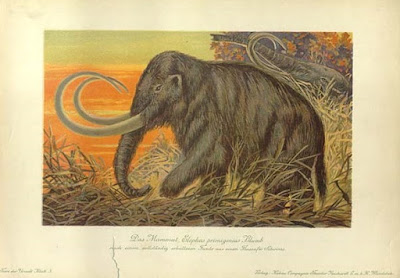The Pleistocene, the Ice Age, and the Flood
In this series, we have seen distinctive features of rock layers, and how deep-time proponents have a heap of trouble explaining what is seen. The Pleistocene layer has many characteristics that are indicative of the global Genesis Flood.
Secular scientists believe that there were many ice ages, but there is actually evidence for only one. The loose rock of the Pleistocene essentially lays on top of the geologic column, and models by biblical creationists show that they were deposited after the Flood and during the Ice Age.
 |
| Illustration by F. John, 1902 |
In the previous article in this series, I explained how the final rock layers were laid down in the global Flood as the newly separated continents and their mountain ranges were being uplifted and the sediment-laden waters poured off the continents. These last Flood layers formed what is known in the geological column as the Cenozoic era, and the fossils it contains are full of creatures that were living at higher elevations in the pre-Flood world. In the system of geological sequence stratigraphy, the Cenozoic is mostly comprised of what is termed the Tejas megasequence.
At the top of the Cenozoic are thin rock strata in various locations around the world that are called Pleistocene. While some of these deposits may actually be late-Flood rocks, the majority were likely formed after the Flood from the unique climactic conditions that occurred. In general, Pleistocene strata are typically composed of unsorted (random-sized fragments) and unstratified (loose and not solidified) rocks and sediment as compared to the lower Flood layers of the geological column which form distinct solid (lithified) strata.
You can finish reading at "The Post-Flood Providential Pleistocene".